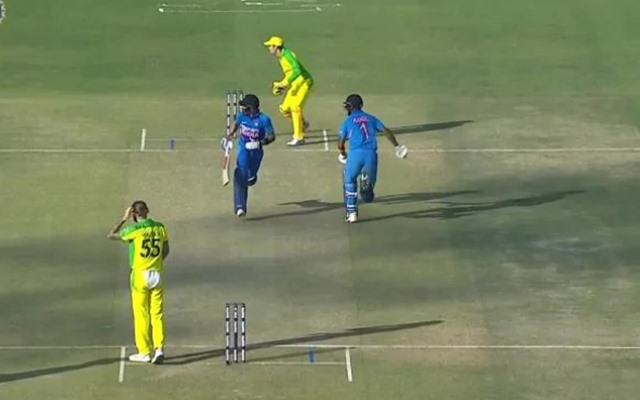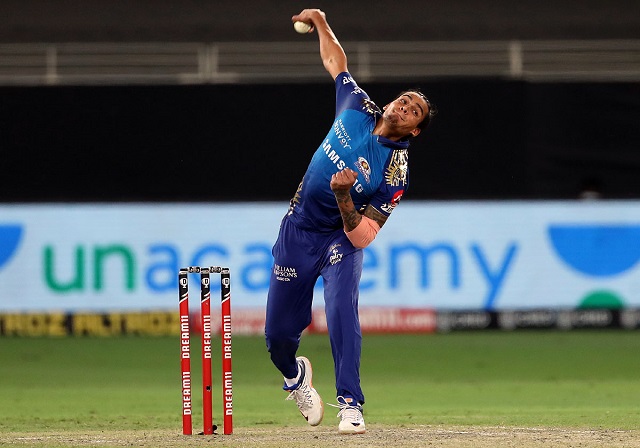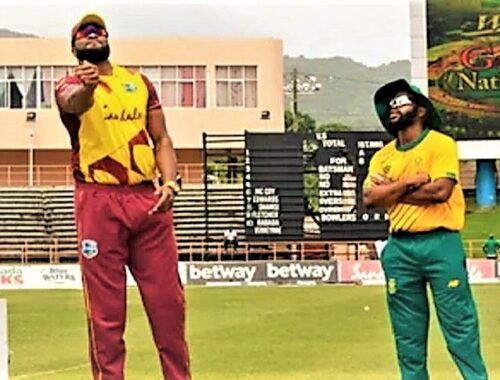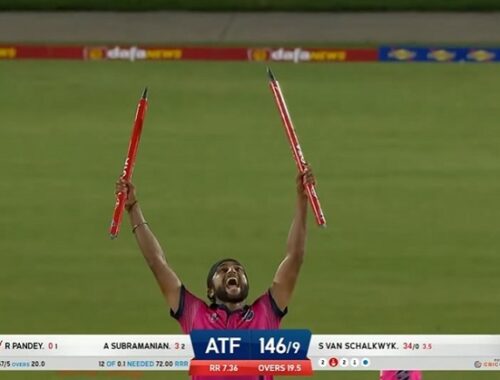
T20 101: How to Watch Major League Cricket like a Pro
The first season of Major League Cricket launches in just a week. And while that's great news to cricket fans in this country, there are a whole lot of sports fans in the US who might be missing out on a lot of the fun and action mainly because they don't know how the game works. If you or someone you know isn't quite sure what T20 cricket is and how it's played -- relax! -- you're only about a thousand words away from knowing how to watch, what to watch, and who to watch when Major League Cricket kicks off in Texas.
While cricket has been played in various parts of the world for several hundred years, T20 cricket -- short for Twenty20 cricket -- has only been played for, ironically, twenty years. The first official T20 match was between Hampshire and Sussex and was played on June 13, 2003. The game is played using essentially the same rules as the longer formats of the sport, but because of the shortened length of the game, you won't have to settle in for five days of viewing before someone wins or loses; in about the same time as it takes to watch a Major League Baseball game, you can watch an T20 entire match. And it's not nearly as complicated as you might think it might be.
At its most basic, each team gets to bat once and whichever team scores more runs wins. It can't get more simple than that. Let's use the league-opener as an example. If the Texas Super Kings are up first, they'll try to score as many runs as possible off of 120 balls. (Interestingly, in baseball, teams will face roughly this same number of pitches over nine innings.) The second half of the game -- the chase -- will have the Los Angeles Knight Riders trying to outscore the Super Kings' total. If you know just this one fact, you'll already be able to follow the game!
Runs are scored a lot like in baseball. Every time the two members of the batting team exchange places by running between the two wickets in the center of the field, they score a run. If the ball is hit into a gap, they might score two or three runs. If the ball hits the boundary rope that rings the playing field, they score four runs and if the ball is hit on the fly over the boundary rope, the team scores six.

Outs are also pretty similar to baseball. If the bowled ball hits the batter's wicket -- the structure made up of three vertical "stumps" topped by two "bails" -- he's out whether he swung at it or not. Overall, it's not much different than a strike out. There are "fly outs" if a fielder catches a hit ball before it touches the ground. And there are "ground outs" if a member of the batting team is running between wickets and the fielding team knocks over the wicket before he can reach it safely. The other common way a batter can be out is if the umpire determines that he used his leg or leg pads to prevent a bowled ball from knocking over the wicket. There are a few other ways a batter can lose a wicket, but they don't occur all that often.
While a lot of cricket is like baseball, a lot of it isn't. And here's where it gets cool. Once a batter is out, he's done batting for the day. He doesn't bat again. That's why getting batters out -- or "getting a wicket" -- is so important. If a guy who averages 30 or 40 runs a game is out after only scoring three runs, it can be a game-changer. Generally, the first five or six batters in the team's batting order are going to be the strongest. The remaining guys are your bowlers, who -- like pitchers in baseball -- aren't really known for their batting. If a team loses one or two of their big guns early, it can quickly change the momentum of the game.
To try to accomplish this, the fielding team will throw a wide variety of different types of bowlers at batters to mess with their timing, mojo, etc. And here, again, is another cool twist in the bowler-batter dynamic. While batters can be up all day if they're hitting the ball well, bowlers can only bowl six balls at a time. After every six balls, a new bowler is brought in. Each set of six balls is called an "over." The name T20 refers to the 20 overs (120 balls) that each teams faces.
Unlike baseball, where a team might bring in a lefty to face a right-handed batter, it's more than just switching between righties and lefties in cricket if you're trying to mess with a hitter. There are two main -- and very different -- styles of bowling. Pace bowling is about speed. Because of the straight-armed delivery that the sport's rules require, bowlers aren't firing the ball in the 100s, but the best of them -- and several who'll be playing Major League Cricket -- can hit speeds deep into the 90s. And if speeds in the 90s weren't intimidating enough, bowlers are actually allowed to bounce the ball in at a batter's ribs, head, etc.
The other type of bowling is spin bowling. Here, it's more about slower speeds and balls that bounce unpredictably just in front of the batter's feet. Generally, spin bowlers tend to either get the ball bouncing left to right or right to left using deliveries that appear to defy the laws of nature on how human shoulders and wrists can move. The best spin bowlers, though, can make the ball bounce either to the right or to the left without a noticeable difference in their delivery.

Very few start-up leagues in this country attract the top players in the world from the outset, but -- apparently -- no one told Major League Cricket that. So, if you're now kind of intrigued about spin versus pace bowling, you'll get to see some of the best on the planet at both in Grand Prairie and Morrisville.
The best spin bowler in the world right now is MI New York's Rashid Khan and one of the early pioneers of spin in T20, Sunil Narine, plays for the LA Knight Riders. Some of the fastest bowlers alive will also be on display. The Washington Freedom's Anrich Nortje, the Knight Riders' Lockie Ferguson, and the San Francisco Unicorn's Haris Rauf can all bring the ball in the mid- to high-90s.
On the batting side, you won't see hitters more devastating than New York's Kieron Pollard and Los Angeles' Andre Russell -- two of the most prolific six-hitters ever. In addition, LA's Rilee Rossouw, Texas Super Kings' Devon Conway, and San Francisco's Aaron Finch are all currently in the top ten in the International Cricket Council's ranking of T20 batters.


There's going to be a ton of action and excitement when Major League Cricket gets underway next week and now you have a reasonable idea of what's going to happen once the players take the field in Texas and North Carolina. Of course, I've only scratched the surface here. For a more in-depth look at how the game is played, check out the Rules section of the CricAmerica site.
© CricAmerica.com/Steve Steinberg 2023




